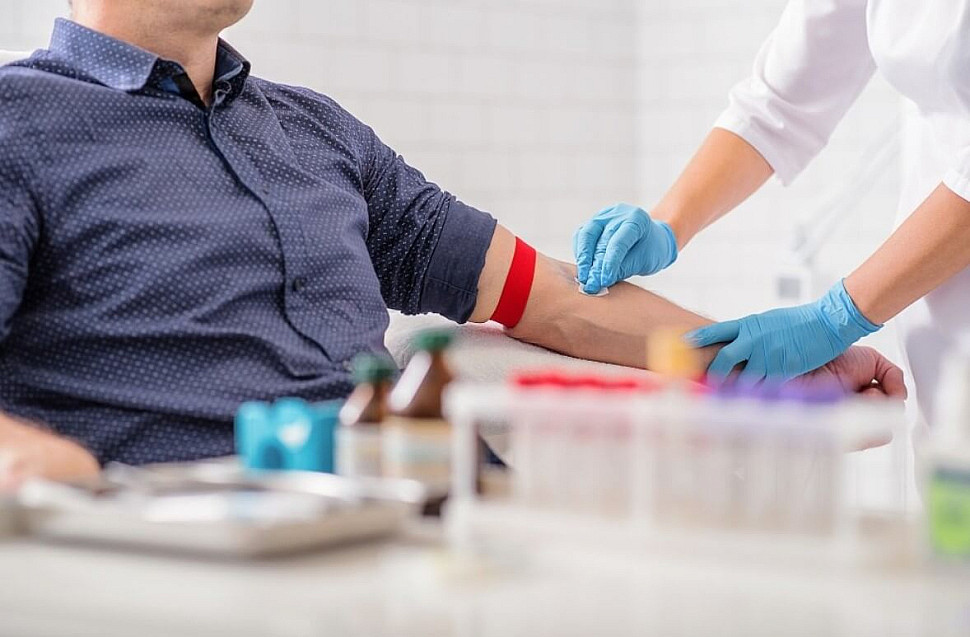Blood phobia

There is an opinion that the profession of a doctor requires complete indifference to the type of blood. But even health-care workers may fear blood. It is important to distinguish the usual aversion to blood scenes and injuries from the panic horror of the thought of blood. This state of science is called hemophobia. This makes people more nervous and anxious and avoids important medical procedures, which negatively affects their health and well-being. What are the features of this phobia and how to cope with it?
Common Symptoms of Hemophobia
All types of obsessive fears have similar physical and emotional manifestations. For example, blood phobia may occur both when seeing blood in real life and when watching blood scenes on TV. In some cases, people cannot read books with intense subjects or watch blood paintings. Sometimes symptoms of phobia appear even from the thought of blood or medical procedures such as blood tests.
The main features characterizing this fear can be divided into physical:
- breathing difficulty,
- a rapid heart rate
- Chest pain,
- shivering,
- nausea
- chills,
- cold sweat.
- and emotional symptoms:
- An increased sense of anxiety or panic
- A persistent desire to avoid blood-related situations
- alienation,
- loss of self-control,
- a feeling of impending danger or injury,
- the inability to control fear.
Hemophobia is often accompanied by a vasovagal fainting—a temporary loss of consciousness caused by a sudden decrease in heart rate and blood pressure in response to a strong stimulus, such as a type of blood. The person usually feels light-headed or weak before fainting. About 80% of people with hemophobia have had a vasovagal fainting, which is rare in other types of panic fears. In children, hemophobia can manifest in different ways: some children get hysterical and cry for a long time, while others, on the contrary, lock themselves up and hide.
Diagnosis and Treatment of Blood Phobia
If people have symptoms of hemophobia (fear of blood), they should consult a doctor. Diagnosis does not involve the use of special instruments or equipment; patients should be told in sufficient detail about their feelings and reactions to blood. Doctors consider how long symptoms last, when they appear, and how intense and whether family members are having phobias.
Treatment of phobias is not always necessary, especially if they do not interfere with daily life. For example, fear of snakes is unlikely to occur often in life. However, if phobia seriously affects quality of life, treatment becomes necessary. Symptoms of hemophobia may manifest during routine medical examinations, causing the person to forego important medical procedures. In such cases, treatment is mandatory.
Factors contributing to phobias
Studies show that blood phobia affects about 3-4% of the population. It usually manifests in childhood, beginning between the ages of 10 and 13. Other mental disorders, such as zophobia, agoraphobia, or panic disorder, may often occur with it. Risk factors include
Heredity.
Some people, particularly those who are emotionally sensitive, are more likely to fear. This is probably due to genetic factors.
A parent or caregiver has a phobia.
Children are prone to imitating adults and can instinctively absorb the fears of loved ones. For example, if the mother is afraid of blood, the child can also develop hemophobia.
Parents are too caring.
Children who are over-protected may experience general anxiety for a variety of reasons. Adults worry about their child’s health and teach them to see threats everywhere.
Traumatic events.
Phobias can occur after stressful or traumatic situations. For example, if a child has been in the hospital for a long time with injuries and has experienced severe pain.
Initial fears usually occur during childhood, but manifestations can vary.
Treatment of Hemophobia
Exposure therapy: Gradual effect on fear through imaging exercises. People are encouraged to present and not be afraid of blood situations.
Cognitive therapy: Working with the thoughts that are causing anxiety. The doctor helps the person substitute more realistic and reasoned thoughts for anxiety.
Rest and relaxation: activities based on deep and even breathing (yoga, meditation, autotraining). These techniques reduce stress and relieve physical symptoms of phobia.
Muscle tension: Prevents fainting. The person is asked to alternately strain the muscles of the arms, legs, and trunk until the face turns red. This distracts the brain from the trigger and helps to avoid fainting.
Drug treatment: Severe cases may require special drugs. However, they should be selected only by a specialist after a thorough diagnosis.


